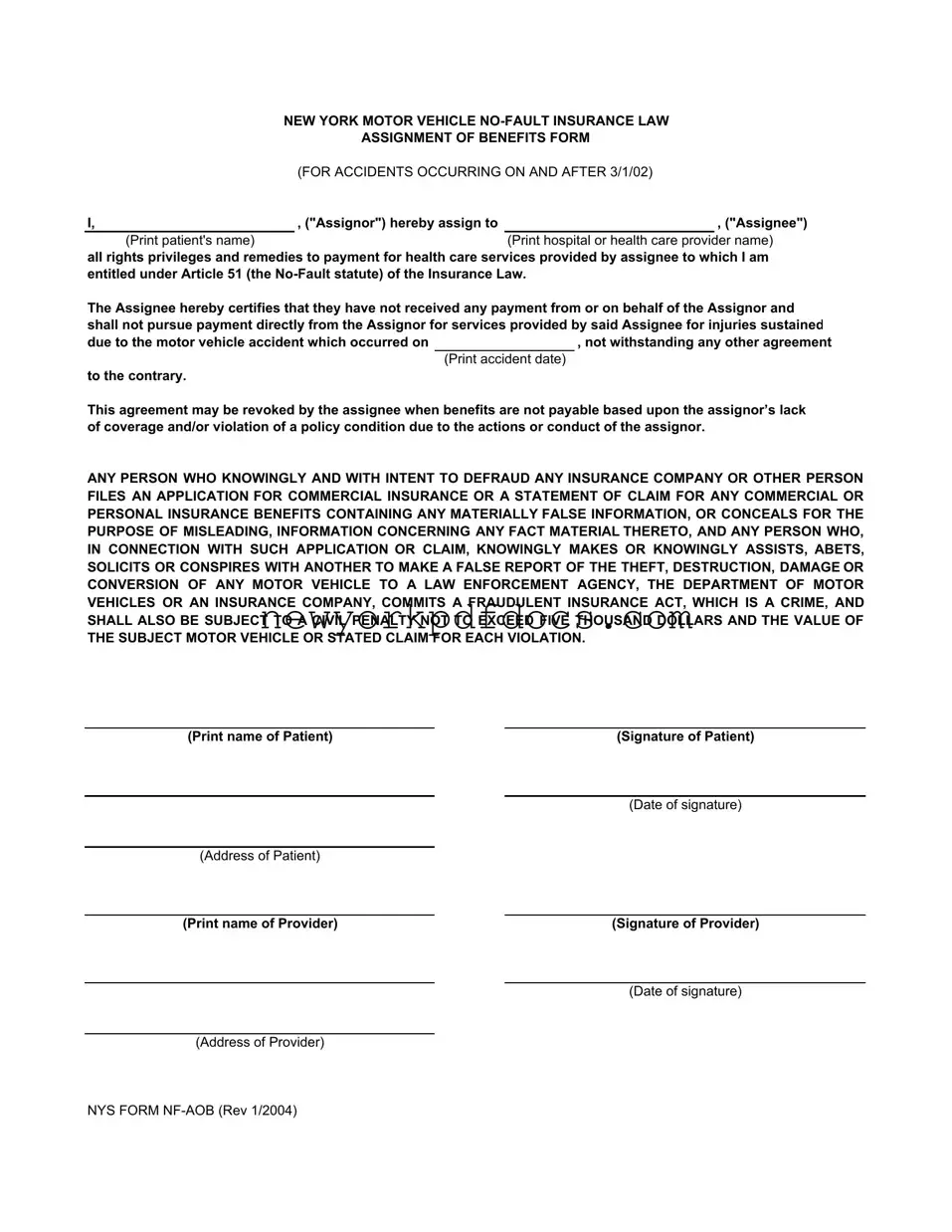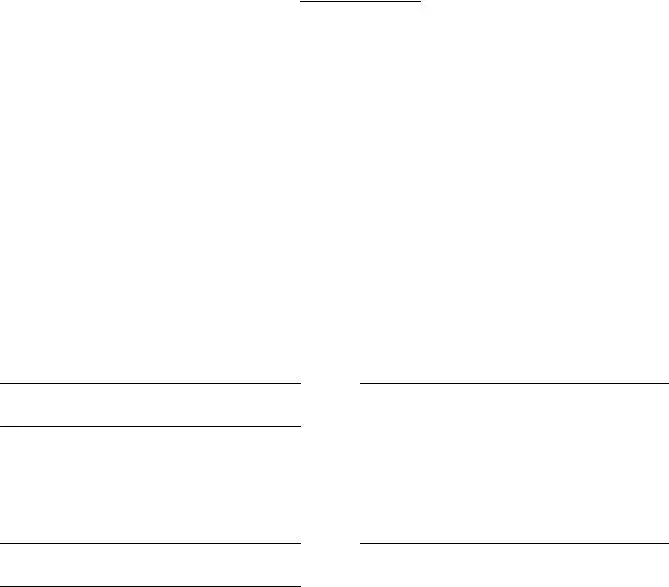The New York Motor Vehicle No-Fault Insurance Law Assignment of Benefits Form, commonly referred to as the NYS NF AOB form, plays a crucial role in the realm of health care services following motor vehicle accidents. Designed for accidents occurring on or after March 1, 2002, this form enables patients, known as the "Assignor," to transfer their rights to receive payment for medical services directly to their health care providers, termed "Assignees." By filling out this form, patients can ensure that their providers can bill their insurance companies directly, streamlining the process of obtaining necessary medical care without the patient having to pay out-of-pocket upfront. The form also includes important certifications, stating that the provider has not yet received any payment from the patient and will not seek payment directly from them for the services rendered. However, it is essential to understand that this agreement can be revoked under certain conditions, such as when the patient lacks coverage or violates any policy terms. Additionally, the form contains a warning about the serious consequences of committing fraud in relation to insurance claims, which can result in significant penalties. Overall, the NYS NF AOB form is a vital document that facilitates the relationship between patients and health care providers in the context of no-fault insurance claims.

